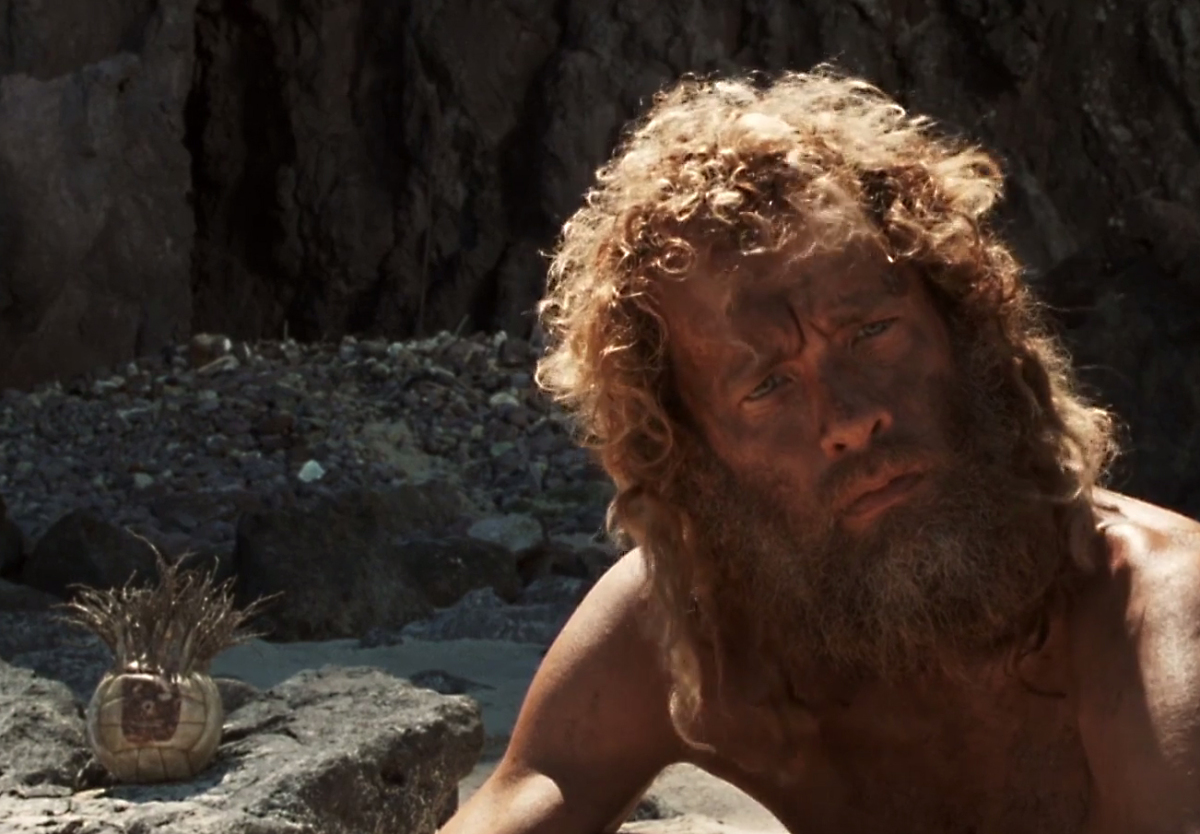
Zemeckis and his crew duly started production, and the first part of Cast Away was shot. In all, he gained around 50 pounds to play the version of Chuck that we see at the start of the movie. It took years before the script would join up into something they’d all want to make.

He had worked on a draft with Bill Broyles, and a year after they’d completed Forrest Gump together, he sent it to Zemeckis. Hanks, it should be noted, was the original driving force behind Cast Away. As such, as pre-production ramped up, he began gaining weight. Between Cast Away and Flight, Zemeckis is probably the best director when it comes to staging plane crashes, although Hanks would be part of an even better-filmed plane landing in Clint Eastwood’s Sully.Ĭast Away, two decades after its release is remembered well for Hanks’ performance and the massive amount of effort that went into it- much better than for how it’s remembered as a movie.Yet back in the later 1990s, he was in a position to do so. Zemeckis did better with The Walk, even if it wasn’t quite at the level of the documentary that inspired it, Man on Wire, as well as Flight back in 2012. While the island portion of Cast Away represented fine minimalist filmmaking, Zemeckis has gone far away from anything like that in the years since, mostly making films like The Polar Express (also with Hanks), Beowulf, A Christmas Carol, Welcome to Marwen, and this year’s The Witches. Everyone knows Zemeckis knows his way around effects, but his best films - Back to the Future, Forrest Gump, and even Who Framed Roger Rabbit - are great for their human element, even beyond the effects. In the meantime, Zemeckis used the hiatus to make another film, What Lies Beneath, which was released six months before Cast Away. The film, released in December of 2000, had a production story that’s the stuff of legend, and reminiscent of that of Scorsese’s Raging Bull : Zemeckis shot half the film- the first and third acts- before adjourning for an entire year, at which time Hanks lost a dramatic amount of weight and grew out his beard, to convincingly portray a man starving on an island- a period in which Hanks was often seen at awards shows skinny and with the long beard.
#TOM HANKS IN CAST AWAY MOVIE#
In a highly controversial move at the time, the film’s trailer gave away that Chuck gets off the island and returns to his hometown and his girlfriend (Helen Hunt.) The film had some fascinating ideas to play with here, in that everyone Chuck knew thought he was dead, that they’d even had a funeral for him, and that the girlfriend had moved on, gotten married (to Chris Noth) and even had a child.īut this portion of the movie collapses into melodrama, along with an ending that’s corny, even by Zemeckis standards. It’s a shame about the rest of the movie, though. It’s one of Hanks’ best on-screen turns, and got him one of his many Oscar nominations. This works, both because of the power of Hanks’ performance, and because the film invests stakes in Hanks getting off the island, where he ultimately stays for more than four years.


Adding to the difficulty, Zemeckis uses no background music at all.
#TOM HANKS IN CAST AWAY HOW TO#
The entire island sequence, lasting over an hour, has Hanks alone, frequently talking to himself, as he plots first to make fire, and later to figure out how to escape, meanwhile coming to terms with being the time expert living in the slowest place on earth, with nowhere to go. He therefore must survive, alone, on the island, with a volleyball (which he names Wilson) his only companion. But as a movie? It’s only middling.Ĭast Away told the story of Chuck Noland (Tom Hanks), a FedEx executive obsessed with time and efficiency, On a trip to Malaysia, Chuck’s plane crashes in a remote part of the Pacific, before washing up on an island, and Chuck is the only survivor. It’s an ambitious production, well-remembered for a performance from Tom Hanks that put his body and health on the line. Robert Zemeckis’ Cast Away, released 20 years ago this week, is one of those films that’s much more impressive in terms of its degree of difficulty, than as a filmmaking achievement.


 0 kommentar(er)
0 kommentar(er)
